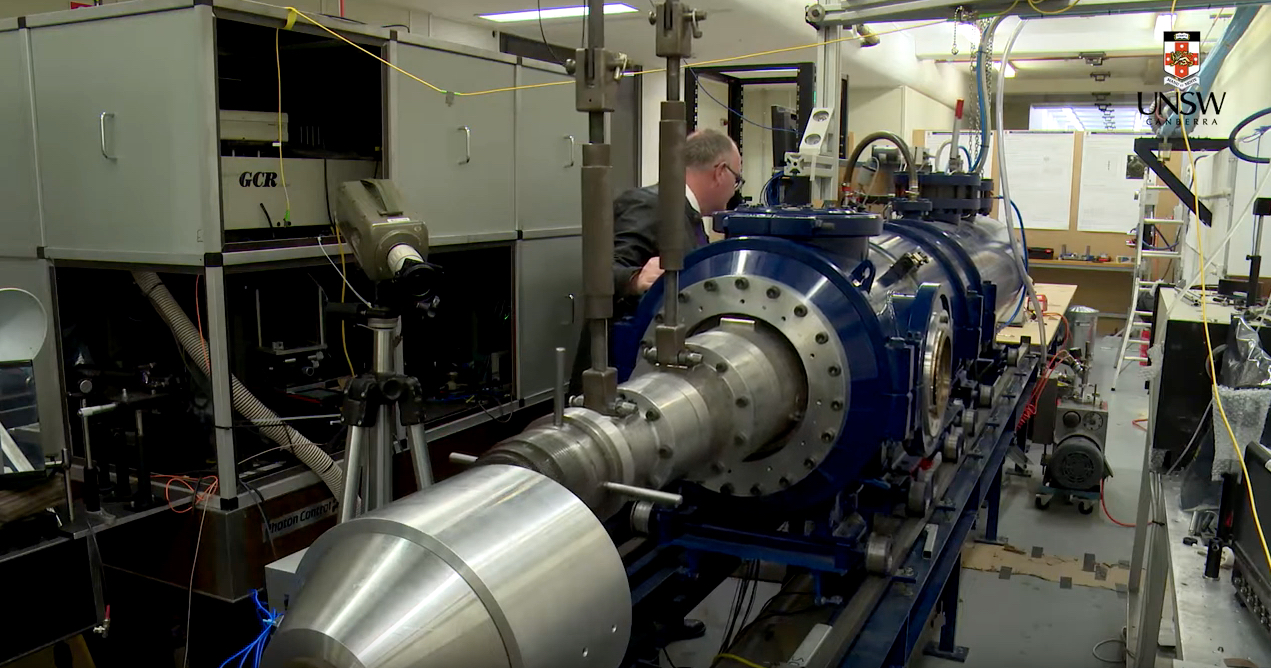Ask an expert: What is hypersonics?
Hypersonics is a key research area for UNSW Canberra. Associate Professor Sean O’Byrne explains hypersonic speed and its potential uses. What is hypersonic speed?
Hypersonics is a key research area for UNSW Canberra. Associate Professor Sean O’Byrne explains hypersonic speed and its potential uses. What is hypersonic speed?

Hypersonics is a key research area for UNSW Canberra. Associate Professor Sean O’Byrne explains hypersonic speed and its potential uses.
What is hypersonic speed?
On the ground sound travels at about 340 metres per second. If you go faster than that, then it's supersonic. And if you go more than about five times faster, it's called hypersonic. And there's no real magic number for how fast you're going. What happens as you get more hypersonic – so as you go faster and faster – the heating effects of the flow start to become really important, and so that's why they give it a different name than just supersonic.
What travels at hypersonic speed?
In the natural world, things like meteors and asteroids coming into the Earth’s atmosphere go at hypersonic speeds. The space shuttle and other space vehicles go at hypersonic speeds. Vehicles that we send to other planets, like the Mars Pathfinder-type probes, they are also hypersonic vehicles. People are attempting to build aircraft that go at hypersonic speeds. There are lots of reasons to want to go really fast.
Does that mean we could one day fly overseas on a hypersonic plane?
People say you could go from Sydney to London in four hours. It's possible that we could have hypersonic commercial aircraft and there are companies who are seriously looking into that, including Boeing. So, it's certainly physically possible. The question is not whether it can be done. The question is whether there's a business model for it, whether it can be done economically enough because a hypersonically propelled vehicle uses up a lot of fuel and somebody has to pay for that fuel. It's always a question of: ‘is the benefit of getting somewhere really fast worth the expense and all of the other problems associated with making it go that fast?’ – and that's the thing that is difficult to tell.
What hypersonic capabilities do we have at UNSW Canberra?
Our hypersonic shock tunnel can make a flow that's like flying at 40 kilometres altitude at 10 times the speed of sound, or it can make a flow that looks like a vehicle entering into a planetary atmosphere like Mars, but only for a millisecond, only for a thousand for the second.
What kind of research is UNSW Canberra doing in the field?
The technology that we're developing will certainly inform the design of the next generation of hypersonic propulsion systems and planetary entry systems. The work that we do tells people how these devices should work and helps them to make more efficient engines that will operate over a wider range of flow conditions than we can.
In what ways do you see hypersonic travel being used in the future?
Being able to access planets means that now have access to resources that are on those planets. It's possible that in the future we might be able to do mining on places like Mars. It's a very long view, but having access to those kinds of resources will be very important, potentially, into the future. Being able to enter those atmospheres and exit them again in a reliable way with large pieces of machinery requires a very strong understanding of how to do that. And that's a worldwide effort.